Overview
Amazon Total War is a partial conversion for Rome Total war version 1.5 or Barbarian Invasion version 1.6. There are separate versions of the game for each executable. It uses the mod:switch option, so it will not interfere with any of your original game files. Be sure you apply it to a clean install of RTW, as you may experience ctd's when entering battles if not.
ATW adds three new Amazon factions to the game: Amazonia, the Valkyrja, and the Gorgons. These belong to a new culture, that of the Amazons, with new units, generals, retinue members, and traits just for them. My inspiration for this was the Amazons of legend, and I have tried to keep everything in the mod in the spirit of those legends. So just as legend has it, the Amazons are outstanding archers and horsewomen. They also fight in the standard greek hoplite style, as well as having some troops using the sagaris, an axe that was a signature weapon of the Amazons (and where calling a woman an "old battle-axe" comes from). As the Amazons were not known to be sailors of any repute since the fall of the Libyan Amazons a thousand years before the mod is set, I have limited them to recruiting biremes and triremes.
As the Amazons were reputed to be the progenitors of the Sarmatian people, I have also created a new Sarmatian faction, occupying their ancestral homelands between the Don and Volga rivers. I have tried to emulate their close ties by making Amazonia and Scythia begin the game as Allies. While the Valkyrja and the Sarmatians begin as allies as well. I have also made Sarmatian mercenaries recruitable in Amazonia, as well as Amazon mercs recruitable across the steppes.
While all Generals are female, the spies, assassins, and diplomats remain male by design. These men would be specially recruited from the Amazons courtesan class of men, or from men in foreign lands. The reason being that in the world outside of Amazonia men can move far more easily through society than women can. Due to the constraints of the game's hard coding, they will all have female names however.
But Amazons and are not all that is different in ATW. The original game map has been modified by the inclusion of 34 new territories. Most of them are located in North Africa, the Steppe, and the mountains of Armenia. Scythia has been moved to its more historically accurate starting position in the Crimea and lower Ukraine. It has also undergone a large change in its unit roster, now having many more infantry units of better quality than before. This reflects the effects of their having become partially sedentary at the time the game begins.
Every Barbarian faction now has a 4th tier of development. There are many new units, including Onagers for all Barbarians. Maiden Axes have been added to Britannia and Gaul. Chosen Slingers added to Britannia, Carthage, and Iberia. Dacia and Thrace now have Chosen Falxmen. Gaul and Germania have regular Archer Warbands. Mercenary Cretan Archers and Rhodian Slingers are now recruitable by the Hellenic factions from their home islands. Scutarii are now recruitable by Carthage. Elephants and Noble Cavalry have been added to Numidia, Noble Cavalry to Iberian, and Heavy Cavalry have been added to the Greek Cities.
In addition I have tweaked the stats of many units, such as increasing the range and damage of all Slingers, reducing the attack of Warhounds, and increasing the attack and defense of Iberian Infantry and Equites, and increased the defense of Naked Fanatics. Many factions have had their unit recruitment trees altered, with most temple units now being recruitable from a regular barracks instead.
The game's corruption triggers have been changed so as not to kick in until your treasury reaches 100,000 and 150,000 denarii respectively. So you do not have to worry as much about making too much money.
Every faction has a Legendary Artifact associated with it. Each is unique, and had can only be possessed by a member of its parent faction. These artifacts are represented in the game as retinue members, and give their holders very significant bonuses. If lost through character death there is a random chance they will reappear later in the game.
As this is an early release there is still work to be done. The general portraits are also only placeholders. Permanent ones will come in a future release. I have disabled the pre-battle speeches of the Amazons, and will also create new ones in a later release, and possibly add strategic map sound effects for Amazon units.
Download Options
There are two separate copies of Amazon Total War. One for use with the Rome Total War executable, and the other for use with the Barbarian Invasion executable.
Amazon: Total War 2.5c For BI - Full Version
Amazon: Total War 2.5 for BI to 2.5c Patch
Amazon: Total War 2.5c For Rome Total War - Full Version
Amazon: Total War for RTW 2.5 to 2.5c Patch
Saves from 2.4 or earlier are not compatible with 2.5. Savegames from 2.5 are compatible with 2.5c.
Installation Instructions
Unzip the file you download to your base Rome Total War folder (i.e. the one with RomeTW.exe in it). When you are done you should see the folder "amazon" alongside your data, logs, Miles, preferences, saves, and other folders. Like so:
RTW
:-amazon
:-bi
:-custom
:-data
:-logs
:-Miles
:-preferences
Now create a new shortcut for Amazon Total War.
For more information on editing the Command Line of Rome Total War look here.
If you have downloaded the RTW version, then go to your RomeTW.exe file and right-click on it.
If you have downloaded the Barbarian Invasion version, then go to your RomeTW-BI.exe file and right click on it.
An options box will pop up.
Move your mouse down to "Send To". Another box will pop up along side the first one.
Move your mouse over to "Desktop (Create Shortcut)", and click on it with your left mouse button.
Now go to your Desktop and you will see the new shortcut there, named "Shortcut to RomeTW.exe"
Right-click on the new shortcut, and a box will pop up.
Click on Properties in this box.
A new window will open up, with three tabs across the top. If the Shortcut tab was not already selected, click on it.
Click in very right end of the box named Target.
Now add in a space and then the following text: -mod:amazon -show_err
So your Target box should look something like: "C:\Program Files\Rome Total War\RomeTW.exe" -mod:amazon -show_err
Now click on Apply.
To rename it something more descriptive click on the General tab.
There will be a field at the very top of the window. Type in: Amazon Total War.
Now click on Ok. You are done.
Optional: I have included several desktop shortcuts which you may wish to use. While you still have the Shortcut Properties window open, click on the Shortcut tab, then click on the Change Icon button at the bottom of that window. A Change Icon window will appear. Click on the browse button to navigate to your RTW\amazon folder. You will find several.ico files there. Select the you would like by double-clicking on it. Then back at the Change Icon window click on Ok. Then finally click on OK again to close the Shortcut Properties window.
Some Screenshots (click on the thumbnails to see the full size images)
Amazonian Agema Axweoman fighting a Macedonian Hypaspist.
Amazonian Militia Hoplites vs. Thracian Infantrymen.
Amazon Cavalry ready their bows.
Amazonian Hoplites hold the line against a Thracian General's charge.
Amazonian Axewomen on the move.
An Amazonian Captain.
Amazonian Agema Archers lay in the weeds.
Amazonian Chariots in action.
Amazonian Armoured Hoplites stand ready.
The lines clash.
Death in the Ranks
Amazon Hoplites vs. Spartans.
Athenian Marines
The Spearwarband of Germania waits for the ravens.
Armenian Heavy Spearmen charge!
Valkyrja Drakones in their shield wall.
Valkyrja Late General's Bodyguard shooting at close range.
Valkyrja Late General's Bodyguard charges home!
Drakones vs. Chosen Axemen.
Valkyrja Berserkers charge a German Spearwarband.
Top of the world Ma!
Valkyrja Heavy Cavalry Chopping down the Night Raiders.
Poeni Bowling.
Elephant Mayhem.
There will be no dawn for men.
Gorgon Agema Axewomen vs. Carthaginian Sacred Band.
Thracian Bastarnae.
Thracian Noble Cavalry skirmish with the enemy.
Thracian Peltasts hurl their deadly javelins.
The Maiden Axes of Gaul wait patiently for their chance to decapitate an unwary foe.
The Chosen Slingers of Briton in action.
Carthaginian Scutarii prepare for a volley.
Poeni Slingers under heavy fire.
The Chosen Falxmen of Dacia attack.
Spartans Charge!
Numidian Noble Cavalry.
Numidian Elephants on the move.
Spartans brace for a Gorgon Elephant charge.
Sarmatian Noble Cavalry deliver a devastating charge.
Sarmatian Virgin Cavalry desperately battle the Bosporan Infantry of Scythia.



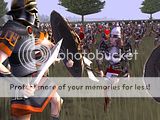

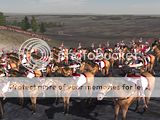

















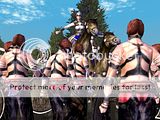
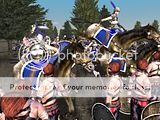











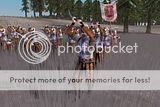







 Reply With Quote
Reply With Quote














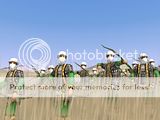



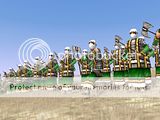

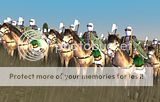









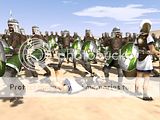
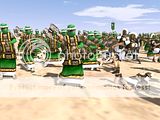

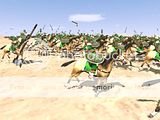

















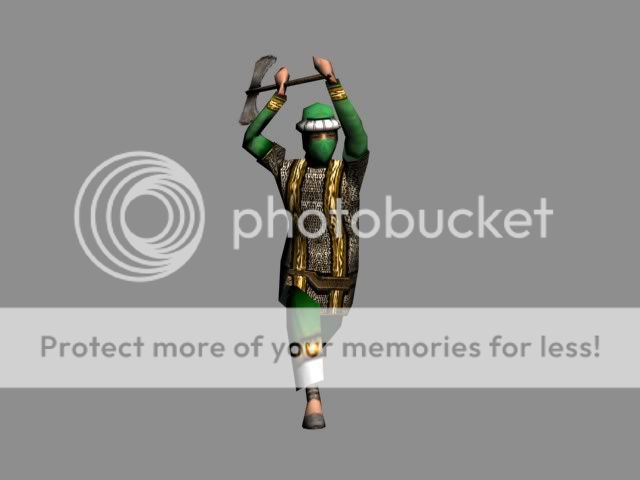





































Bookmarks